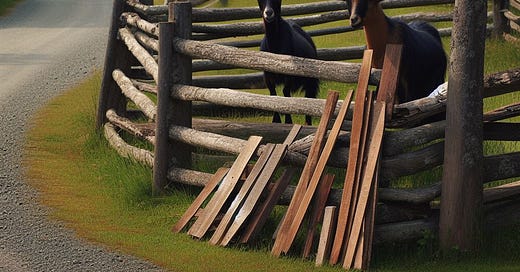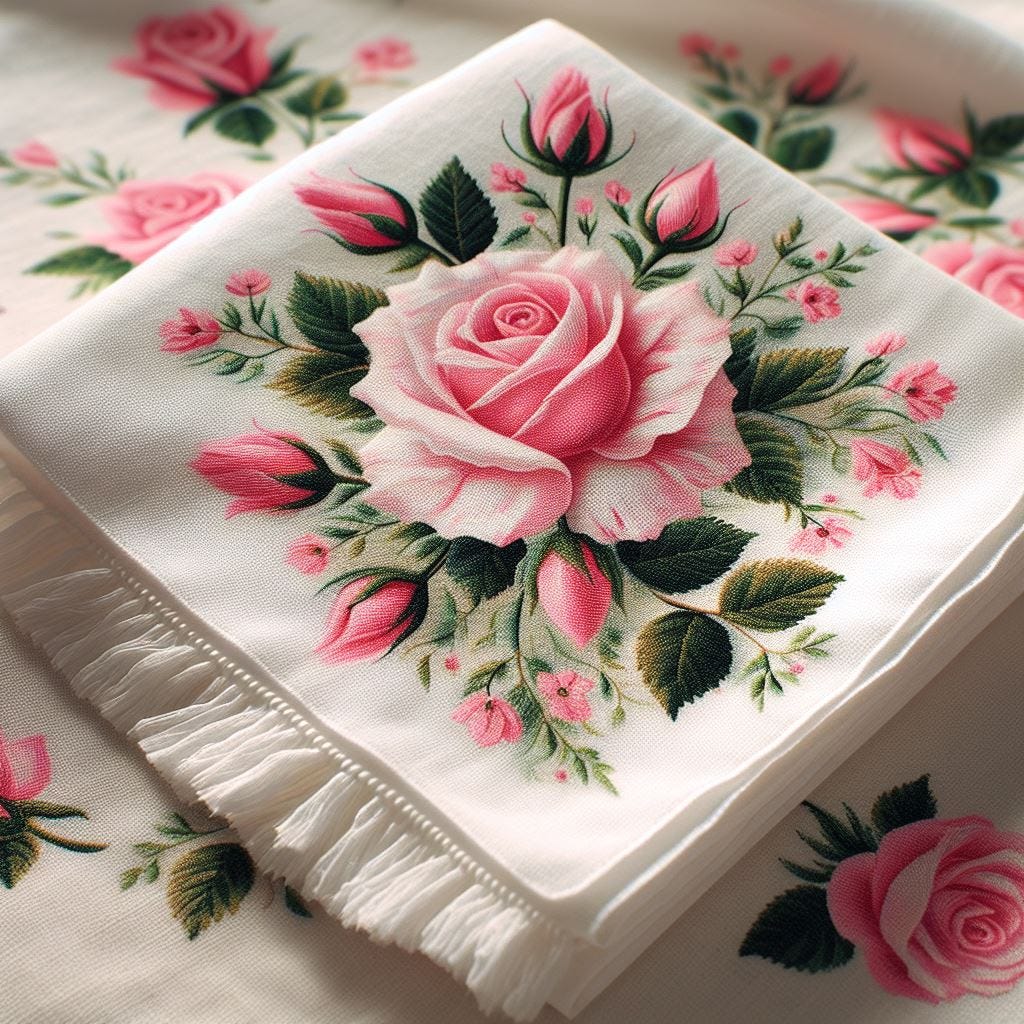“A craft store!” I exclaimed. “Let's go in.” Jamie was maneuvering the truck over gravel roads in rural Florida, between goats and calves that romped behind split-log fences. We'd just left a day at the beach. Our sunburned faces were chapped and red, our shoulders greasy with sunscreen, our arms pocked with bites from the mosquitos swarming our campsite. I wore a low cut cover-up over a two-piece that had fit better when I was twenty pounds lighter. Jamie, who had not yet discovered his inner “woman,” wore swim trucks, a damp tank top and a scraggly beard as sun-bleached as the hair on his arms.
I suppose I should have wondered why a craft store was nestled between farms in the middle of nowhere, its handmade wooden sign directing us toward a pole barn. But my enthusiasm for visiting an out-of-state craft shop distracted me. Jamie made the turn and found a spot to park.
The walls of the simple store were lined with bolts of heavy cotton fabrics in solid burgundies and forest greens. Cards of buttons and sewing notions lay scattered on tables. There were no peacock-colored beads for a gypsy lampshade, no laser-printable greeting cards, no sheets of Japanese paper flecked with gold. It was an utterly uninteresting place. Ever the optimist, I talked myself into liking a stack of printed handkerchiefs. They were weird, bordered things in Easter-egg colors, printed with roses and daisies in a flat, color-by-numbers style. Maybe I'd sew them all together and make a strange quilt, I thought, ignoring the nagging voice reminding me I'd barely slapped together a pillow. Nonetheless, I chose a bundle and brought them to the register, a bored Jamie following close behind.
The slim Mennonite girl at the register, who was maybe pushing thirteen, performed a restrained smile. Her long hair was coiled neatly under a white, truncated bonnet-like thing, and her modest, neck-to-floor cape dress was pressed stiff and sparkling clean. Presently she was joined by her sister, another child in another sheath of austere cotton duck, one as basic medium-blue as the other. In the presence of girls so young, so pristine, so innocent, I became acutely aware of my bare flesh, lurid and splotched. The fat heaving over the neon polyester of a Marshall's bikini. The oil and sweat in my hair. The girls were all business as they rang up my purchase: not impolite, certainly, but not exactly warm and welcoming either.
Write about a time someone thought you were dressed inappropriately. Did you know from their expression, or did they tell you in words? That's today's writing prompt from Kicking in the Wall.
When Jamie began to identify as a woman, I thought a lot about what we wear and why we wear it. Clothing can serve a purpose, like keeping you warm or cooling you off. But more often, it's a social statement. “I'd rather worship the sun than cover my shame,” my beachwear said that day. “I'd rather be happy than clean.”
But our fashion choices are “a dialog, not a monologue,” as I say in my memoir when Jamie worries that crossdressing makes him “look gay.” People have free will. They can misinterpret, or reject, your message. As we learned that day in Florida, those who value God and family and a tight backstitch may not care for cheap fuchsia synthetics or the loose morals they suggest.
This is one of the great contradictions of transgender identification. By crossdressing, Jamie chose to flout societal norms, then resented the entirely predictable social reaction that came with doing so. This is framed as a transgender issue, but it's an issue we all face. We are not born wearing clothes; we choose them. All who court social disapproval are at equal risk of manifesting it.
There's a scene in my book when Jamie and I go for a walk in the small town we're living in. He isn't yet “out,” but he's wearing a corset under his t-shirt, which he suddenly realizes someone might detect.
“It’s true; that could happen. You’ve stopped dressing only at home and you’ve started removing the hair from your arms and legs. With that comes the risk of getting caught—a risk you’ve chosen. You could easily wear the corset only at home, forgo the bra you don’t need, even skip making appearances at the mall. Haven’t you deemed whatever you get from dressing worth the risk?
'If you’re worried on my account,' I say, 'don’t be.'
But there’s something strange in your expression, a sort of shock—as though you’ve met with this danger through no fault of your own. As though your clothes are not something you put on, but something that springs from your body, like a stigmata, destined to give you away. You seem to simultaneously need, and yet resent, the risk of exposure.”
I have dressed inappropriately many times. Overdressed, underdressed. Assumed punk rock would work when hipster was expected. Worn a funny cat-meme shirt to a party full of sweater-wearing preppies. I've been stared at, laughed at, ignored, misunderstood. If it bothers me, I can dress differently next time. What I can't do—what none of us can do—is change other people.






Read your book. It's beautifully written. Do you feel like he WANTED you to be mortified and disapproving, so it would deepen his victim status and give him something to complain about? Make you the bad guy and him the poor tortured oppressed soul?
I was recently at a trans speak-out where a nonbinary-identified person spoke of being stared at in public - rarely head-on, but when passers-by thought they could do so discreetly. I'm tender-hearted, and I couldn't help but feel sympathy. But I could help but think: What else can be expected when you deliberately send visual signals that scramble people's schemas? Evolution has made sex salient to us for numerous reasons, not just reproduction. Even the politest soul will do a double-take when meeting a person who's 5'4" with size DDDD breasts and a ZZ Top beard.